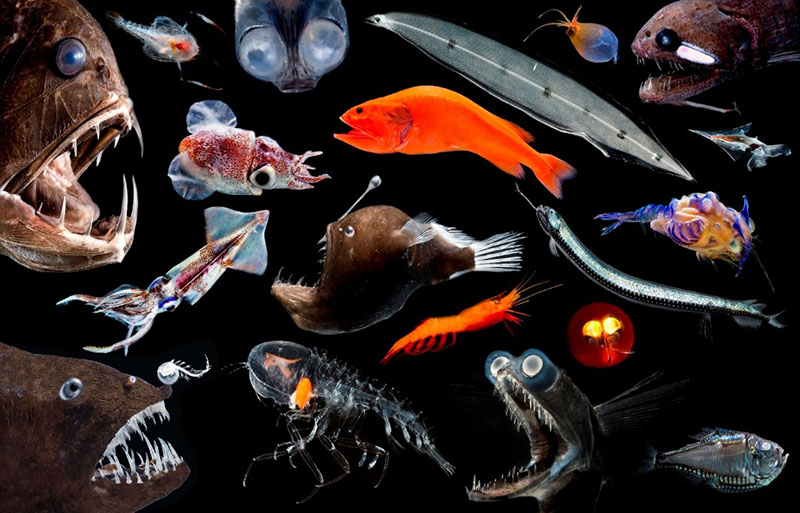“Our concerns are the repercussions to rest of the ocean when mining the sea floor,” said Tracey Sutton, Ph.D., a research scientist and professor at Nova Southeastern University’s (NSU) Halmos College of Arts and Sciences. “The impacts to the water column above the area being mined must be considered, particularly what discharge of unwanted material from surface processing will do to marine life within that water column. In essence, the effects can only be negative. The question then becomes, how negative and on what scale?”
Dr. Sutton is on the research team that conducted a new study on deep-sea mining, led by University of Hawai‘i (UH) at Mānoa researchers. This study argues that deep-sea mining poses significant risks, not only to the area immediately surrounding mining operations but also to the water hundreds to thousands of feet above the seafloor, threatening vast midwater ecosystems. Further, the scientists suggest how these risks could be evaluated more comprehensively to enable society and managers to decide if and how deep-sea mining should proceed.
Interest in deep-sea mining for copper, cobalt, zinc, manganese and other valuable metals has grown substantially in the last decade and mining activities are anticipated to begin soon. Currently 30 exploration licenses cover about 580,000 square miles of the seafloor on the high seas and some countries are exploring exploitation in their own water as well. Most research assessing the impacts of mining and environmental baseline survey work has focused on the seafloor.
However, large amounts of mud and dissolved chemicals are released during mining and large equipment produces extraordinary noise—all of which travel high and wide. Unfortunately, there has been almost no study of the potential effects of mining beyond the habitat immediately adjacent to extraction activities.
“This is a call to all stakeholders and managers,” said Jeffrey Drazen, Ph.D., lead author of the article and professor of oceanography at UH Mānoa. “Mining is poised to move forward, yet we lack scientific evidence to understand and manage the impacts on deep-pelagic ecosystems, which constitute most of the biosphere. More research is needed very quickly.
The deep midwaters of the world’s ocean represent more than 90% of the biosphere, contain 100 times more fish than the annual global catch, connect surface and seafloor ecosystems, and play key roles in climate regulation and nutrient cycles. These ecosystem services, as well as untold biodiversity, could be negatively affected by mining.
This recent paper, published in the Proceedings of the National Academy, provides a first look at potential threats to this system.
“The current study shows that mining and its environmental impacts may not be confined to the seafloor thousands of feet below the surface, but could threaten the waters above the seafloor, too,” said Drazen. “Harm to midwater ecosystems could affect fisheries, release metals into food webs that could then enter our seafood supply, alter carbon sequestration to the deep ocean, and reduce biodiversity, which is key to the healthy function of our surrounding oceans.”
In accordance with UN Convention on the Law of the Sea (UNCLOS), the International Seabed Authority (ISA) is required to ensure the effective protection of the marine environment, including deep midwater ecosystems, from harmful effects arising from mining-related activities. In order to minimize environmental harm, mining impacts on the midwater column must be considered in research plans and development of regulations before mining begins.
“We are urging researchers and governing bodies to expand midwater research efforts, and adopt precautionary management measures now in order to avoid harm to deep midwater ecosystems from seabed mining,” said Drazen.
Funding for this work was provided by the Schmidt Ocean Institute and the Gordon and Betty Moore Foundation.
Be sure to sign up for NSU’s RSS feed so you don’t miss any of our news releases, guest editorials and other announcements. Please sign up HERE. You can also follow us on Twitter @NSUNews.
###
About Nova Southeastern University (NSU): At NSU, students do not just get an education, they get the competitive edge they need for real careers, real contributions and real life. A dynamic, private research university, NSU is providing high-quality educational and research programs at the undergraduate, graduate, and professional degree levels. Established in 1964, the university includes 15 colleges, the 215,000-square-foot Center for Collaborative Research, the private JK-12 grade University School, the world-class NSU Art Museum Fort Lauderdale, and the Alvin Sherman Library, Research and Information Technology Center, one of Florida’s largest public libraries. NSU students learn at our campuses in Fort Lauderdale, Fort Myers, Jacksonville, Miami, Miramar, Orlando, Palm Beach, and Tampa, Florida, as well as San Juan, Puerto Rico, and online globally. With nearly 200,000 alumni across the nation and globe, the reach of the NSU community is worldwide. Classified as having “high research activity” by the Carnegie Foundation for the Advancement of Teaching, NSU is one of only 50 universities nationwide to also be awarded Carnegie’s Community Engagement Classification, and is also the largest private institution in the United States that meets the U.S. Department of Education’s criteria as a Hispanic-serving Institution. Please visit www.nova.edu for more information.
About the School of Ocean and Earth Science and Technology: Located at the University of Hawaii at Manoa, the school was established by the Board of Regents of the University of Hawai‘i in 1988 in recognition of the need to realign and further strengthen the excellent education and research resources available within the University. SOEST brings together four academic departments, multiple research institutes, several federal cooperative programs, and support facilities of the highest quality in the nation to meet challenges in the ocean, earth and planetary sciences and technologies. Please visit www.soest.hawaii.edu/soestwp for more information.
Original post https://alertarticles.info


